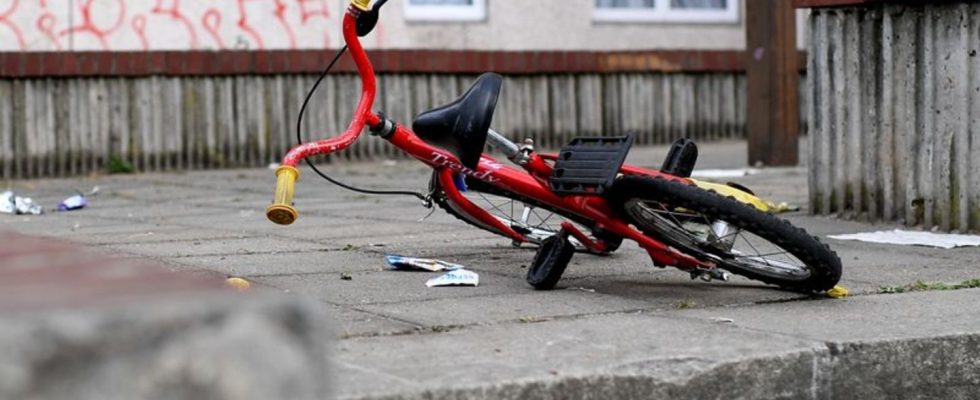research
Fact check: What does the passport say about child poverty?
FDP leader Christian Lindner initiates a debate on child poverty – but the problem cannot simply be traced back to nationalities. photo
© Britta Pedersen/dpa-Zentralbild/dpa
Is it important what nationality a child who receives state support in Germany has? Lindner gives figures on Germans and foreigners. But it’s not that simple. A fact check.
Finance Minister Christian Lindner has initiated a debate on the content of basic child security. Child poverty primarily affects families who, since 2015, immigrated to Germany, the FDP politician claimed.
Are his statements correct? And does it make sense to differentiate between nationalities when it comes to the participation of children and young people? Lindner’s statements in the fact check.
Claim: “In Germany, child poverty has decreased significantly (…) among the originally German families who have been here for a long time.”
Facts: That’s true. In response to a small inquiry from the AfD in the Bundestag, the Federal Employment Agency (BA) put together for the years 2010, 2015, 2020 and 2022 how many children and young people with a German passport received standard benefits under the second social security code – i.e. Hartz IV or citizen’s allowance. During this time, the number fell from around 1.37 million in December 2010 to around 895,000 in December 2022. According to the BA, the figure for March 2023 is around 1.02 million.
Claim: “Overall, however, child poverty in Germany is comparatively high and – in my opinion – indisputably high because of the families who have immigrated to Germany since 2015 as refugees or for other reasons.”
Facts: Since the beginning of the war in Ukraine, experts have had to take a differentiated view of developments. It is correct: According to research by the Federal Employment Agency (BA), the number of foreign children on Hartz IV or citizen’s income has increased. In December 2010 their number was around 305,000, in December 2022 it was around 884,000. According to the BA, around 275,500 Ukrainian children and young people were the largest group to receive citizen benefits in March 2023. By far the second largest group were children and young people from Syria with around 213,400 recipients.
“It’s true that the basic security under SGB II for children and young people in Germany has increased further since 2022 due to the war in Ukraine,” says Anette Stein, family policy expert at the Bertelsmann Foundation. “Because unlike others, these refugees have immediate access to the German social systems.” However, this does not apply to immigration in general. “To bring all these numbers together in an undifferentiated way is like throwing a smoke screen,” says Stein.
Claim: “So there is a very clear statistical connection between immigration and child poverty.”
Facts: The Bertelsmann Foundation doubts that. In January it presented a comprehensive study on the subject. “Child poverty in Germany has been a structural problem for decades that doesn’t primarily have to do with immigration,” says foundation expert Stein. “Child poverty often affects single parents and families with three or more children.”
Full-time jobs that support a family are hardly possible if there are still 400,000 daycare places in Germany. It is also irrelevant which country the children come from, added Stein. “Germany has signed the UN Convention on the Rights of the Child. According to this, every child is entitled to social and cultural participation. It’s a strange discussion when politicians now differentiate based on origin.”
Job experts point out that it takes a long time for refugee parents to gain a foothold in the labor market simply by acquiring language skills, and they need less state support for their families. 54 percent of those who fled to Germany in 2015 were employed in 2021, according to the Nuremberg Institute for Labor Market and Vocational Research at the end of July. According to the institute, more than a quarter (28 percent) of the adults who fled Ukraine were working after a year. That’s fast and a lot. Unlike other refugees, Ukrainians also had work permits straight away.
Lindner also asked himself on Sunday how children could best be supported: “Is it best to help them by transferring more money to their parents’ account? Or is it perhaps at least worth discussing in terms of language support, integration, parents’ employability invest and equip the day-care centers and schools for the children in such a way that they can perhaps catch up on what their parents can’t do?”
Anette Stein from the Bertelsmann Foundation replies: “It doesn’t make sense to think about whether financial aid should flow either to daycare centers and schools or to parents. Because children need both: good daycare centers, good schools and families who support them .” The foundation assumes that around three million children in Germany are at risk of poverty. “We also included hidden poverty, because help is not accepted out of shame, there are bureaucratic hurdles or because families don’t know enough about it,” says Stein.
All information on the dpa fact checks Contact page for the dpa fact check team

